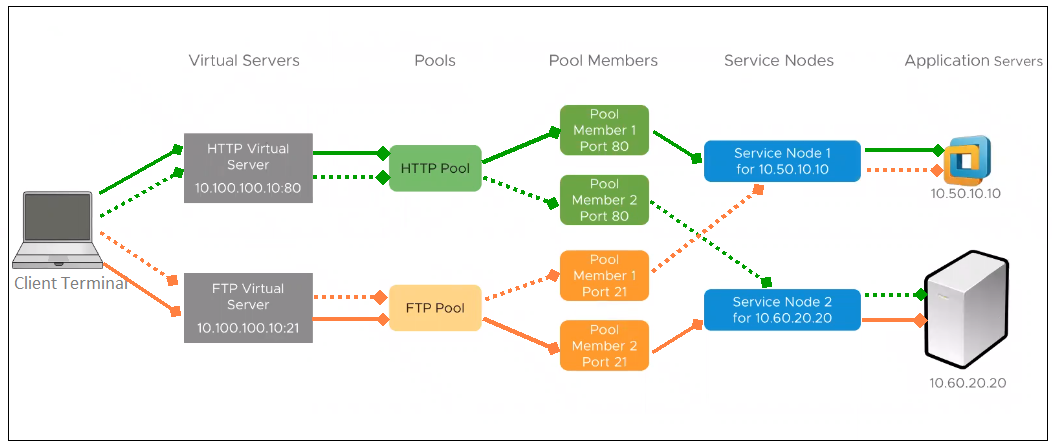To support and enable the load balancing feature of F5, VMware Aria Operations for Networks has been added with required components or entities.
Overview of a F5 Load Balancer and its Components

- Application Servers - The machines where the applications are hosted. For example, if you have a web server, your server runs on application servers (physical or a virtual server).
- Service Nodes - F5 represents the application servers as service nodes. So, service node has the same IP address or FQDN of the application server. Each service node can have multiple applications.
- Pool Members - A logical entity. Each application in a service node is represented by a pool member, which has the same IP address or FQDN of the service node. To identify different applications, the pool members embed the port number with the IP address of the Service Nodes.
- Pools - All pool members that serve one application are grouped as a pool.
- Virtual Servers - A public facing IP address of the application. So, the clients that want to use an application connects to the virtual server IP address (For example, 10.100.100.10) and port number (80 or 21).
- Client Terminal - The connection starts from a client terminal, which is a virtual machine.
The client request connects to the virtual server, which decides the pool members based on the pool. Pool members, then, forwards the request to the application server (VM or physical server).
Note: A single application server can serve multiple requests from different ports and different service nodes.